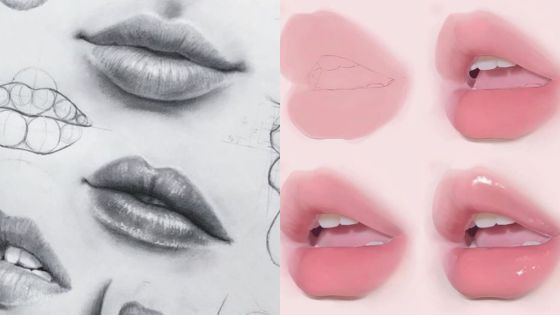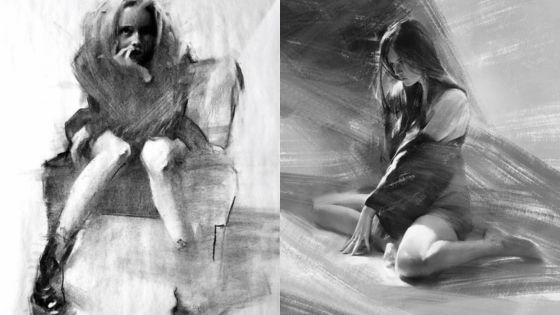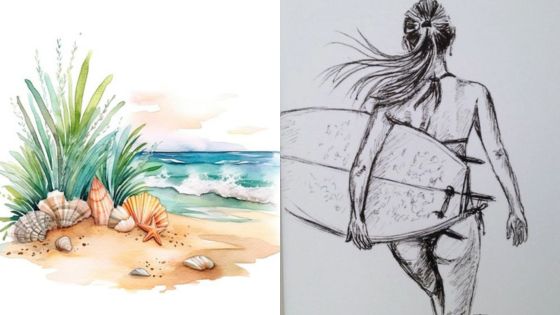Drawing water can be a challenging task for many artists, especially beginners. However, with a few basic techniques and some understanding of water dynamics, anyone can learn how to draw water realistically. This article will teach you everything about drawing water. It covers the materials and tools you need and advanced ideas to improve your water drawings.
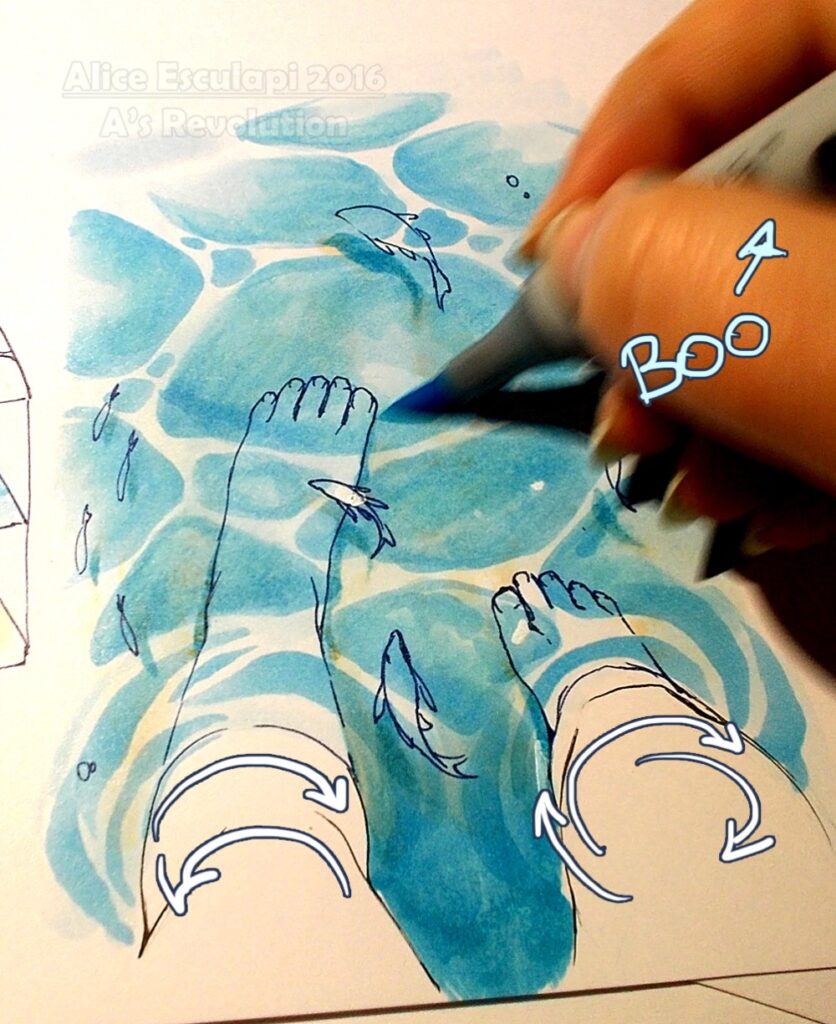
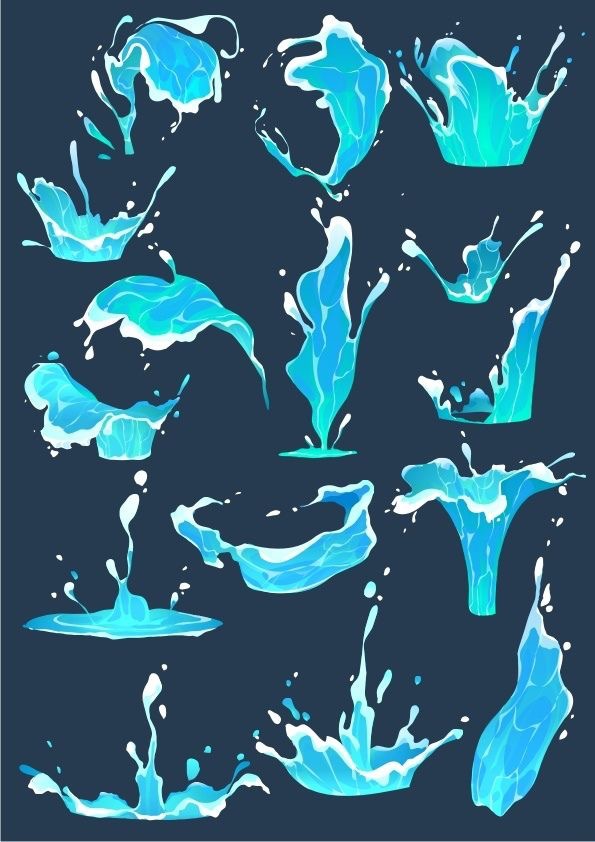
Knowing how water moves is key to drawing it realistically. Water is a complex substance that can take on many different forms depending on its environment and the forces acting upon it. By learning about the properties of water, such as surface tension and fluid dynamics, you can create drawings that accurately depict still and moving water. Additionally, understanding the effects of light and shadow on water can help you create realistic reflections and highlights.
Key Takeaways
- Understanding water dynamics is essential for drawing water realistically.
- The right materials and tools can make all the difference in your water drawings.
- Practice and experimentation are key to improving your water drawing skills.
Understanding Water Dynamics
Properties of Water
Water is a unique substance with many properties that make it essential for life on Earth. One of its most important properties is its ability to dissolve a wide range of substances, which makes it an excellent solvent. Water is also a polar molecule, meaning it has a positive and negative end. This polarity allows water molecules to attract each other and form hydrogen bonds, which gives water a high surface tension.
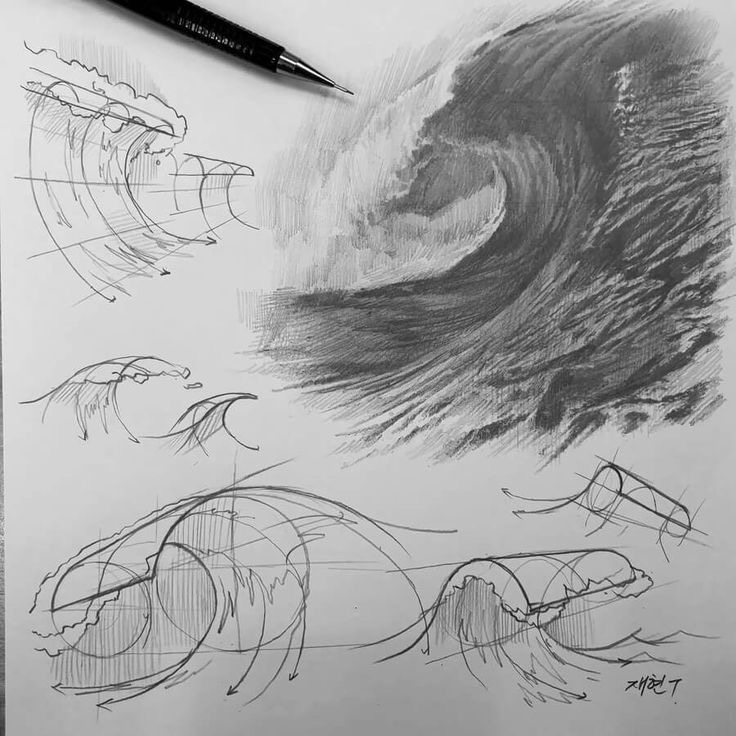
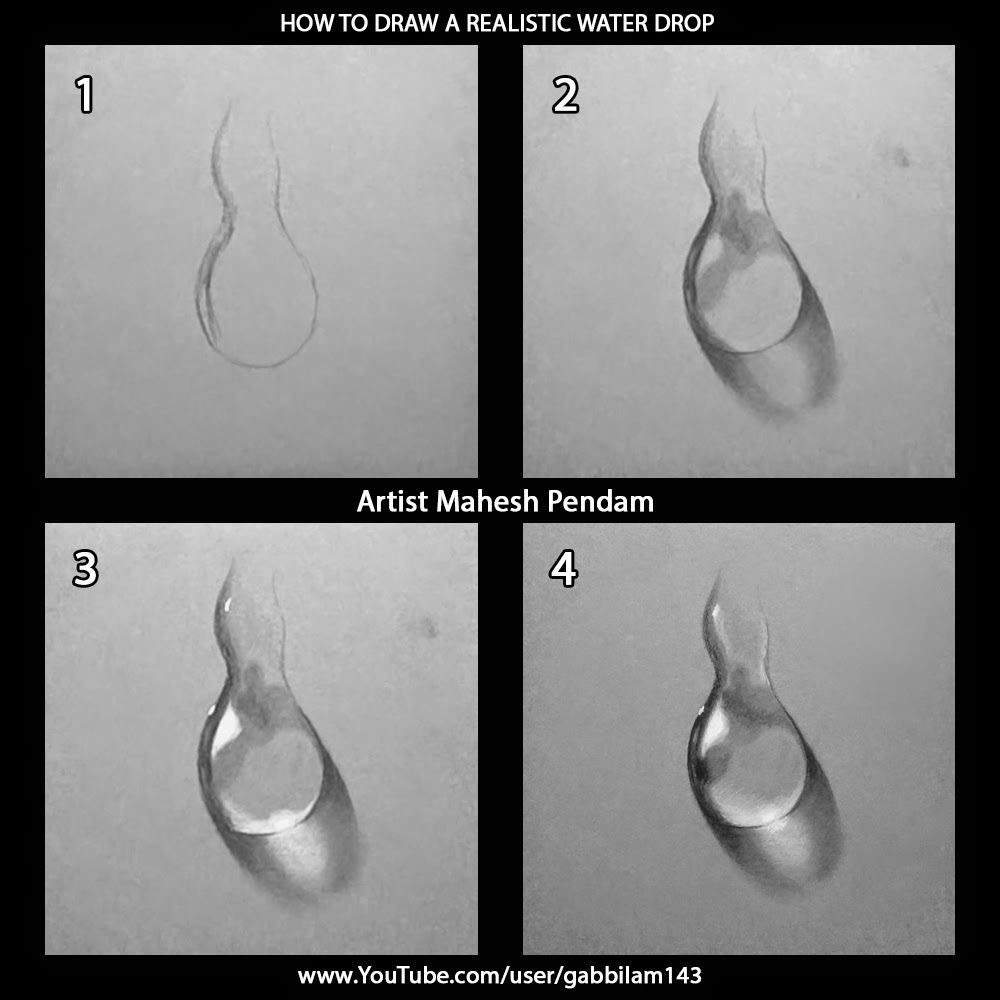
Another important property of water is its ability to absorb and retain heat. This property is known as its high specific heat, which means that water can absorb a lot of heat before its temperature rises significantly. This property is essential for regulating the temperature of the Earth’s oceans and atmosphere.
Light and Water Interaction
Light plays a crucial role in the dynamics of water. When light hits the surface of water, it can be reflected, transmitted, or absorbed. The amount of light that is absorbed by water depends on the wavelength of the light and the properties of the water.
One of the most important interactions between light and water is photosynthesis, which is the process by which plants use light to convert carbon dioxide and water into glucose and oxygen. This process is essential for the survival of most living organisms on Earth.
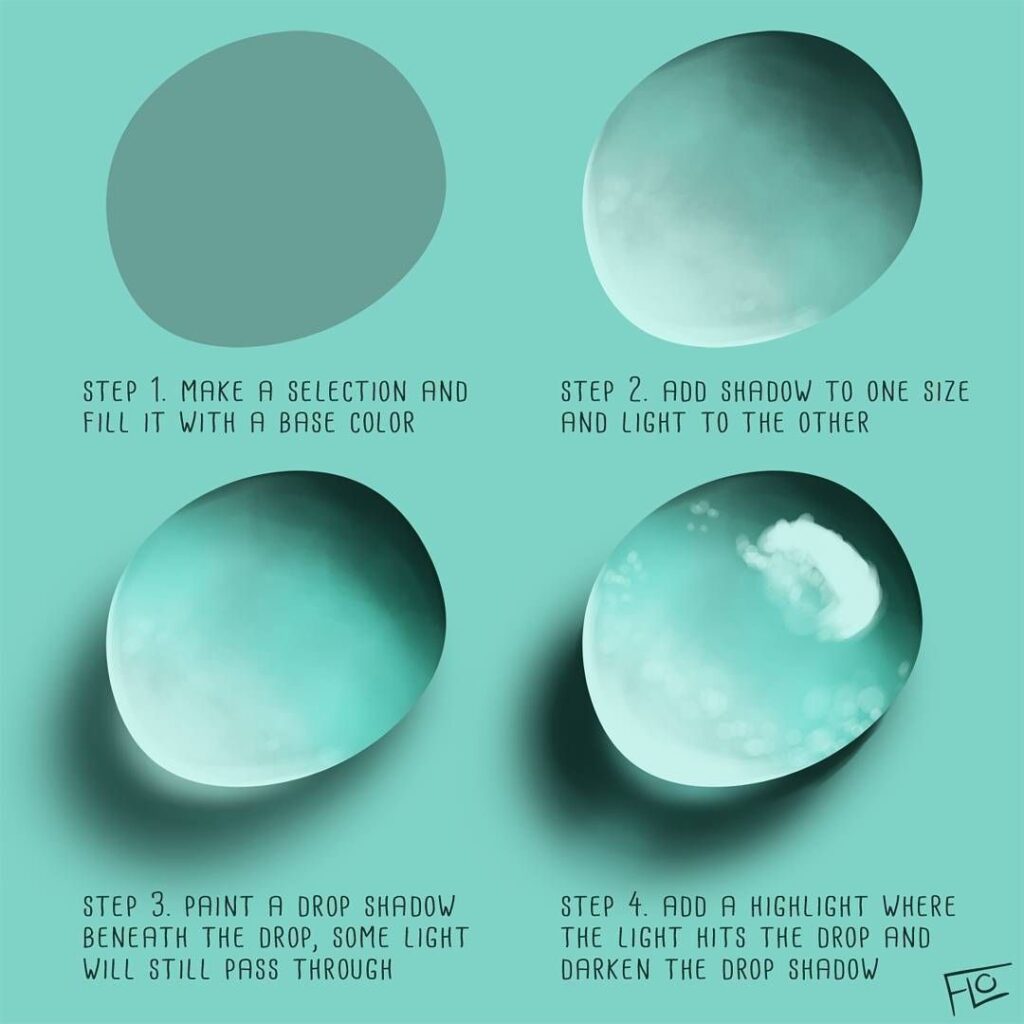
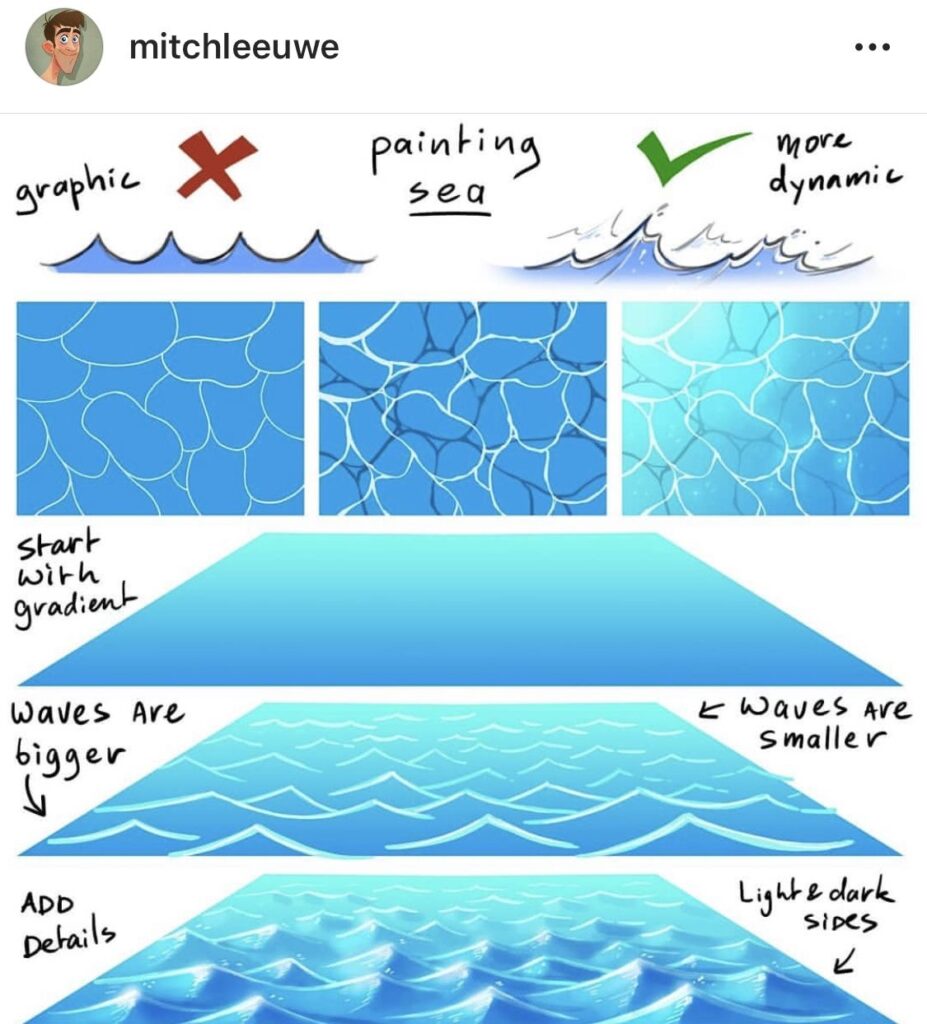
In addition to photosynthesis, light also plays a role in the heating and cooling of water. When sunlight hits the surface of water, some of the energy is absorbed, which causes the water to heat up. This heating can cause water to evaporate, which is an important part of the water cycle.
Overall, understanding the properties of water and how it interacts with light is essential for understanding the dynamics of water. By studying these interactions, scientists can better understand how water moves through different environments and how it affects the Earth’s climate and ecosystems.
Materials and Tools
Choosing the Right Paper
When it comes to drawing water, selecting the right paper is crucial. You should choose a paper that can handle water without buckling or tearing, such as watercolor paper. Watercolor paper comes in different textures, such as rough, cold-pressed, and hot-pressed. Rough paper is best for creating a textured effect, while hot-pressed paper is smoother and better for creating fine details.
Selecting Pencils and Brushes
Pencils and brushes are essential tools for drawing water. You should choose pencils with soft leads, such as 2B or 4B, to create smooth and dark lines. For brushes, you should choose those with soft bristles that can hold water, such as sable or synthetic brushes. You may also want to consider using a water brush, which is a brush with a built-in water reservoir.
Inks and Paints
Inks and paints are also important materials for drawing water. You can use ink pens with different nib sizes to create different line widths. For paints, watercolor is a popular choice because it can create a transparent effect that mimics the look of water. You can also use acrylic or oil paints, but they may require more time to dry and may not create the same transparent effect as watercolor.
Remember, the quality of your materials and tools can greatly affect the outcome of your drawing. By choosing the right paper, pencils, brushes, and inks or paints, you can create a realistic and beautiful drawing of water.
Basic Techniques
Pencil Sketching
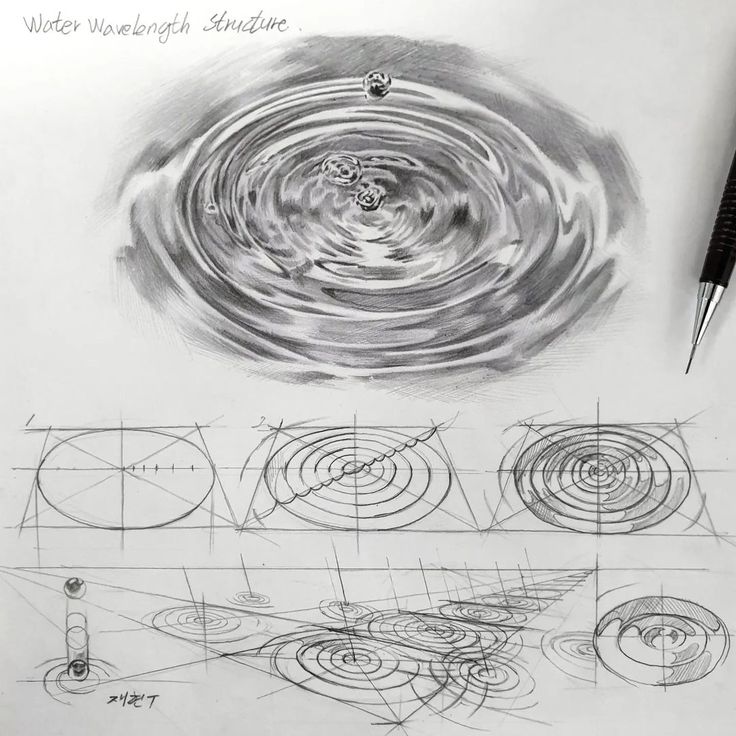
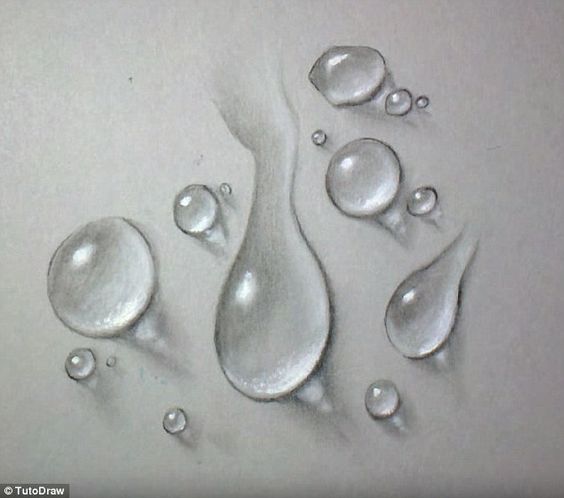
Pencil sketching is a fundamental technique for drawing water. It is important to start with a light sketch to establish the basic shape and composition of the water. Use a soft pencil (2B or 4B) to create a light, loose sketch. Pay attention to the direction of the water flow and the reflection of light on the surface. Use a kneaded eraser to adjust the sketch as needed.
Watercolor Washes
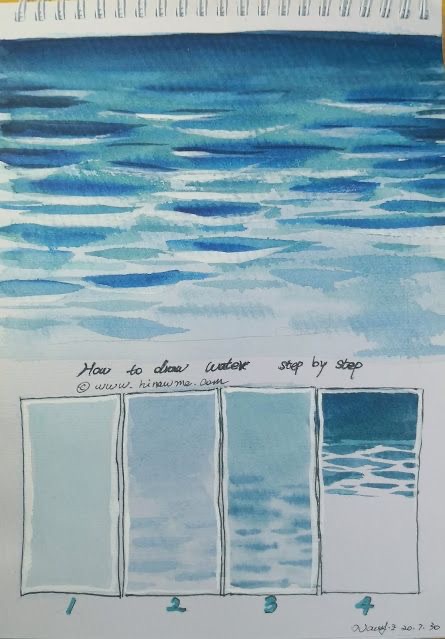
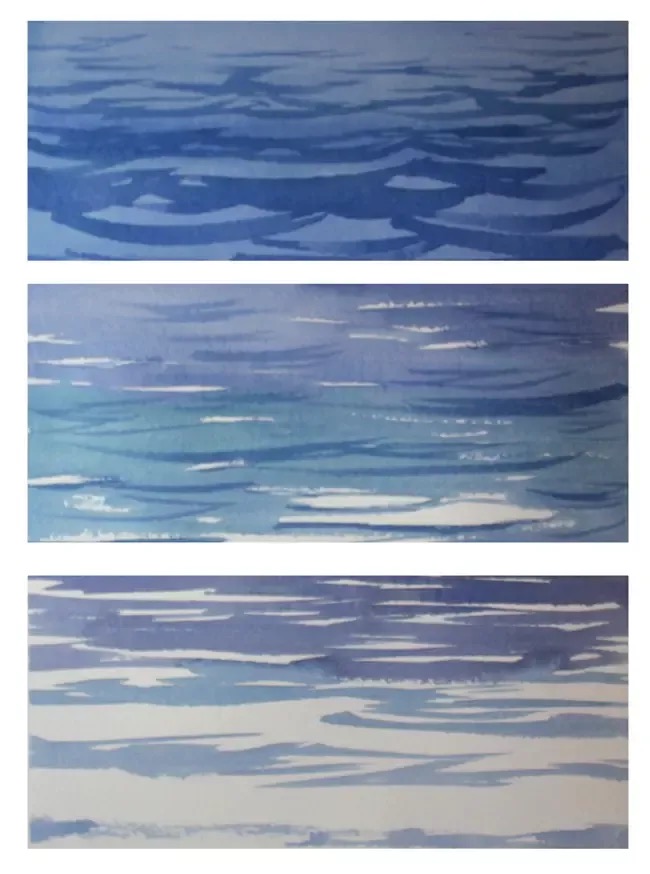
Watercolor washes are a great way to add color and texture to your water drawing. Start by applying a light wash of blue or green to the water area. Add darker shades to create depth and shadow. Use a wet brush to blend the colors and create a natural gradient. Experiment with different brush sizes and techniques to create different effects.
Ink Drawing
Ink drawing is a precise and elegant technique for drawing water. Use a fine-tipped pen to create delicate lines and details. Pay attention to the movement and texture of the water. Use cross-hatching to create shadows and depth. Experiment with different pen widths and techniques to create different effects.
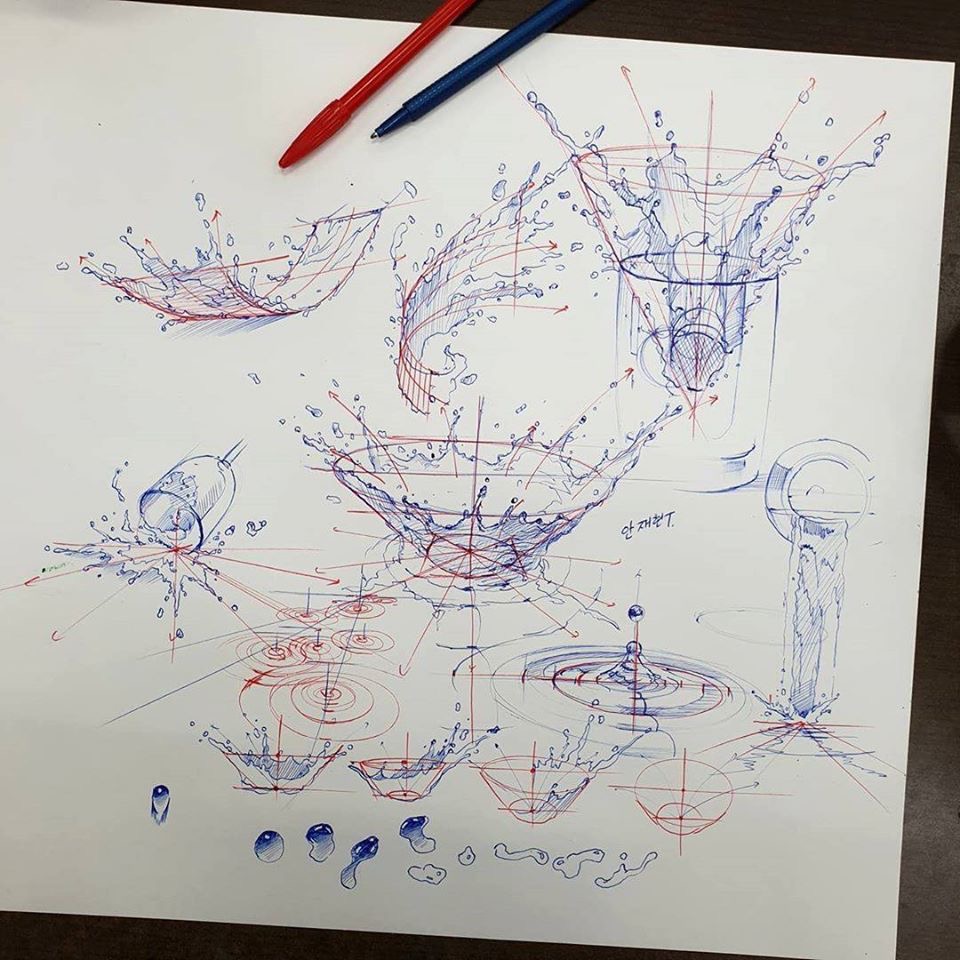
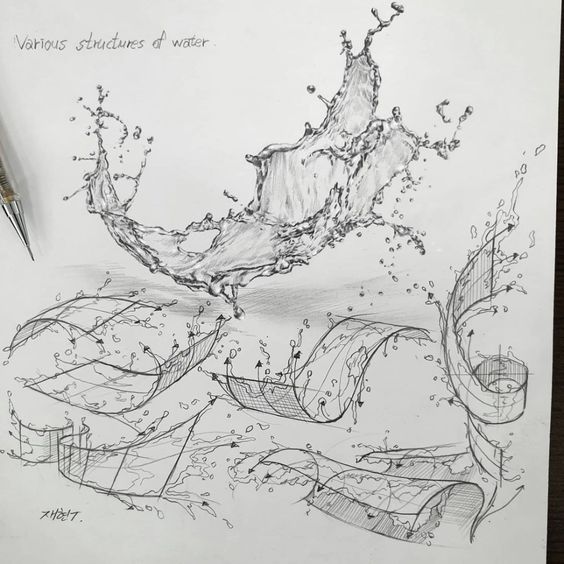
Remember, practice makes perfect. Keep experimenting with different techniques and styles to find the one that works best for you. With time and dedication, you can master the art of drawing water.
Drawing Still Water
When drawing still water, there are a few important things to keep in mind that will help you capture the essence of this serene and calm subject matter. Here are some tips to help you get started.
Capturing Reflections
One of the most striking features of still water is the way it reflects the world around it. To capture this effect in your drawing, it’s important to pay close attention to the objects and scenery that are reflected in the water. Take note of their shape, color, and level of detail, and try to recreate them as accurately as possible in your drawing.
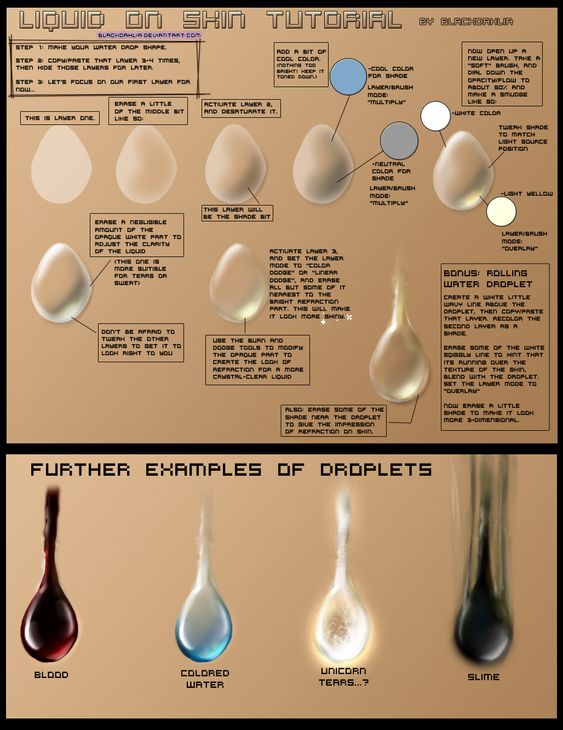
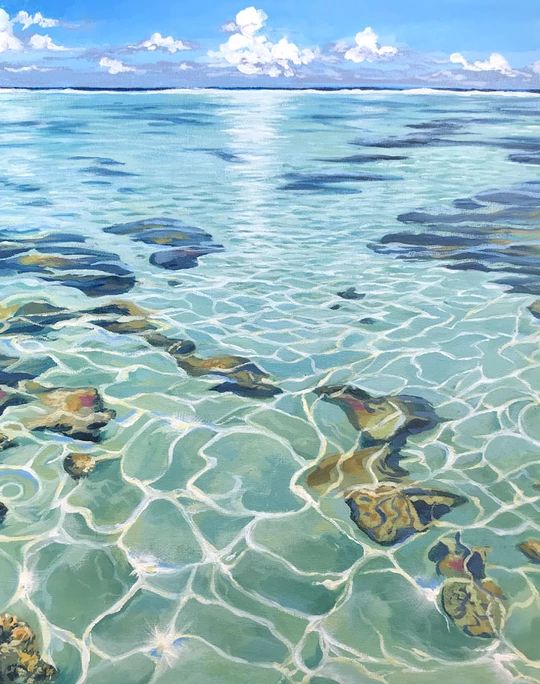
To help you achieve this, you may want to use a grid or other tool to help you accurately place the reflections in your drawing. You can also experiment with different shading techniques to help create the illusion of depth and dimensionality.
Depicting Transparency
Another important aspect of still water is its transparency. Depending on the angle and lighting, you may be able to see through the water to the objects below or behind it. To capture this effect in your drawing, it’s important to use light, delicate strokes to create the illusion of transparency.
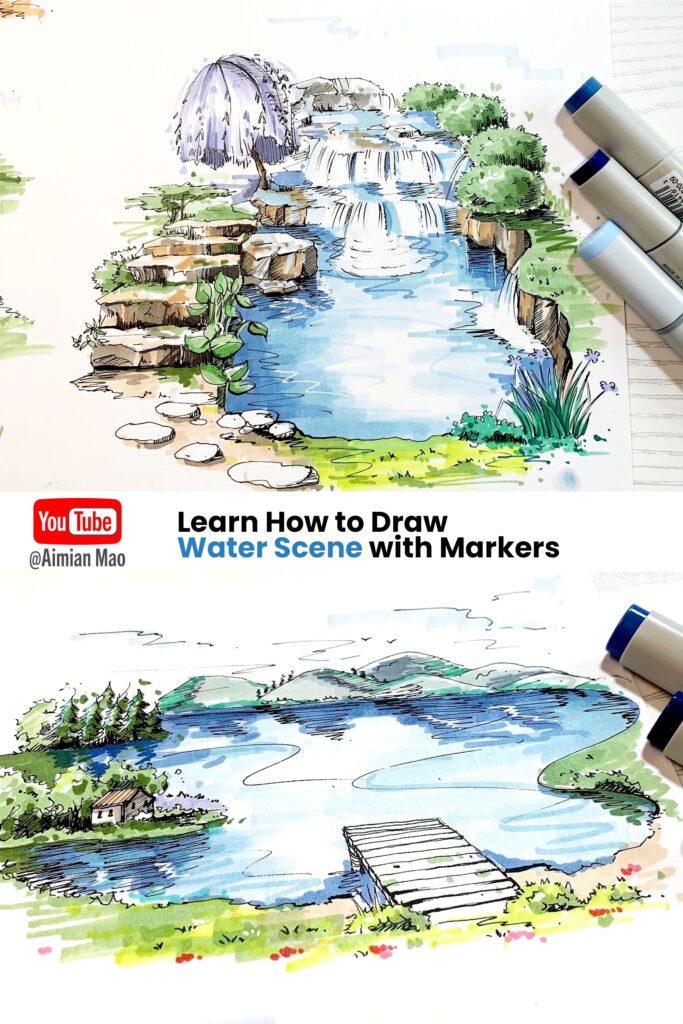
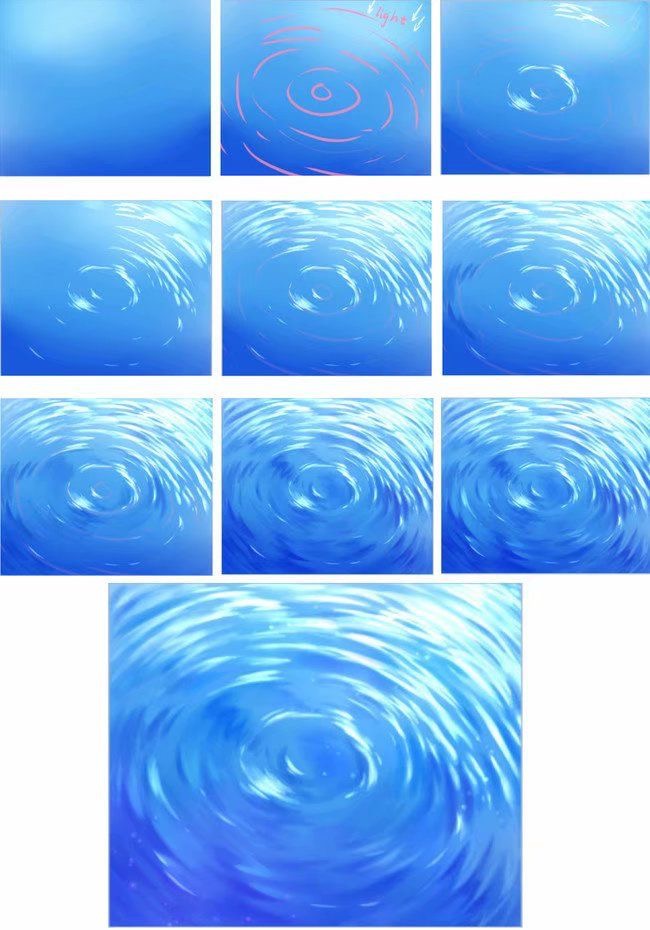
You can also experiment with different shading techniques to help create the illusion of depth and dimensionality. For example, you may want to use crosshatching or stippling to create the effect of ripples or waves on the surface of the water.
By paying close attention to the reflections and transparency of still water, you can create a beautiful and realistic drawing that captures the essence of this serene and calming subject matter.
Illustrating Moving Water
Conveying Motion
When drawing moving water, it’s important to convey a sense of motion and direction. One effective way to do this is by using curved lines. These lines can be used to show the flow of the water and the direction it’s moving in. You can also use lines to show the speed of the water. For example, faster-moving water can be depicted with longer, more exaggerated lines.
Another way to convey motion is by using shading. By adding shading to your drawing, you can create the illusion of depth and movement. For example, shading can be used to show the shadows created by waves or the movement of water around rocks.
Creating Ripples and Splashes
Ripples and splashes are an important part of drawing moving water. To create ripples, start by drawing small, circular shapes in the water. These circles should be drawn close together to create a ripple effect. You can also add shading to the ripples to give them more depth.
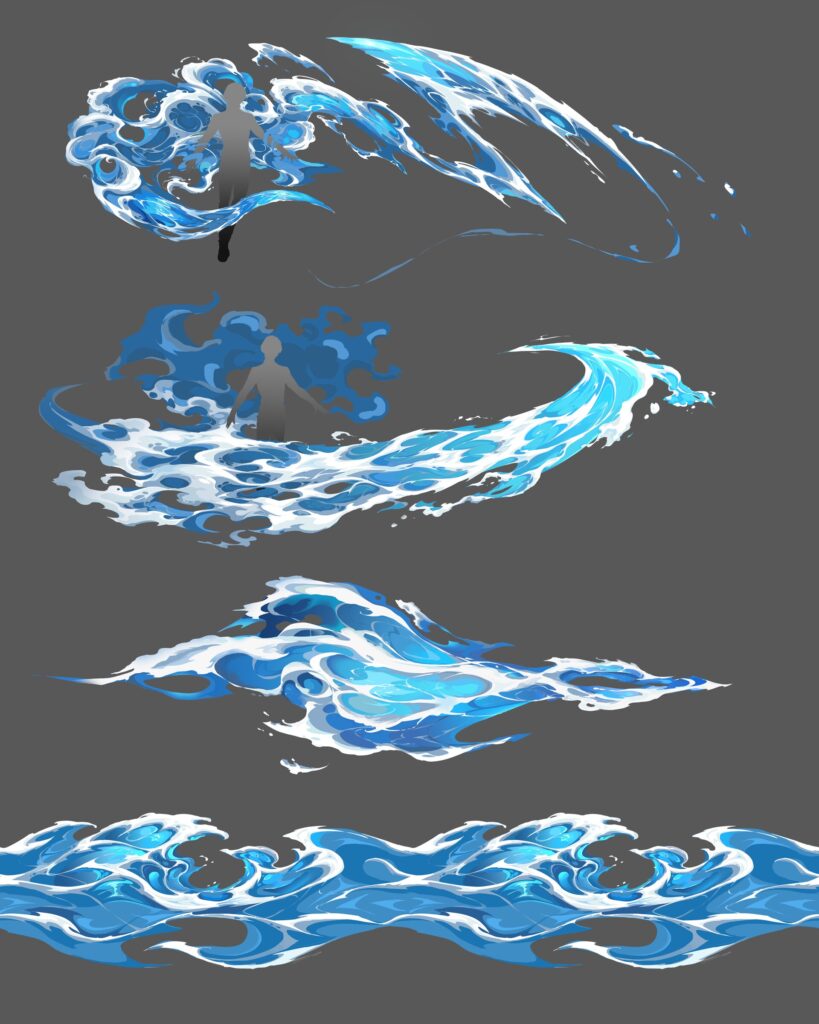
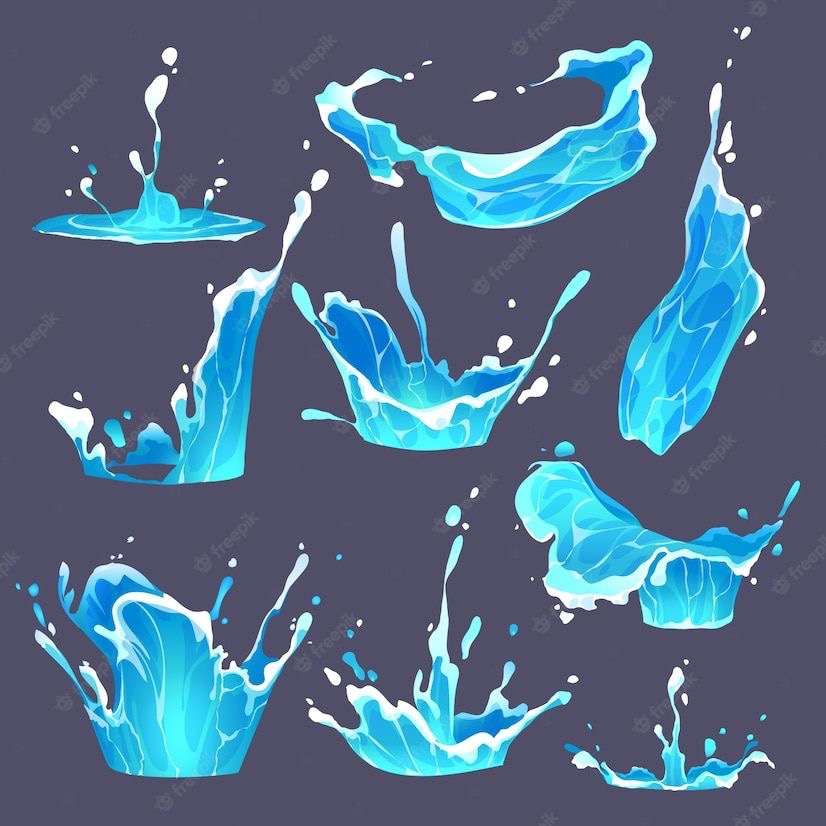
Splashes can be created by drawing curved lines that extend out from the water. These lines should be drawn at an angle to show the direction of the splash. You can also add shading to the splash to make it look more realistic.
Remember to use a variety of techniques when illustrating moving water to create a dynamic and realistic scene. Experiment with different line styles, shading techniques, and textures to find the best approach for your drawing.
Advanced Concepts
Underwater Perspectives
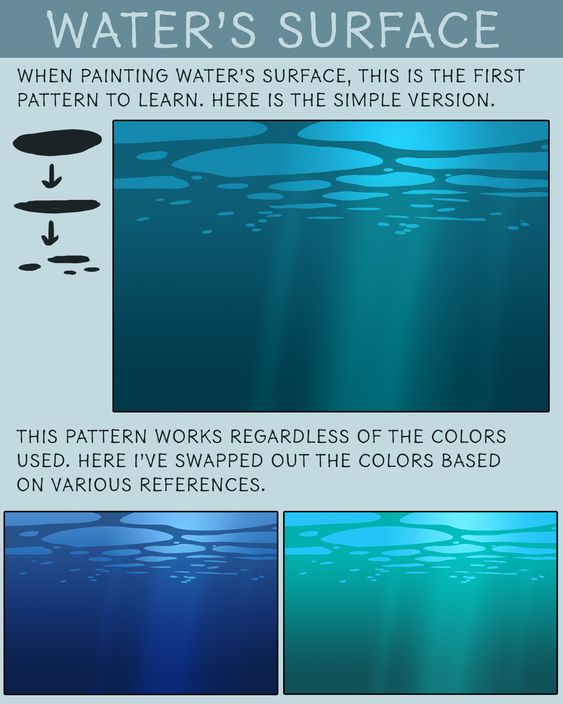
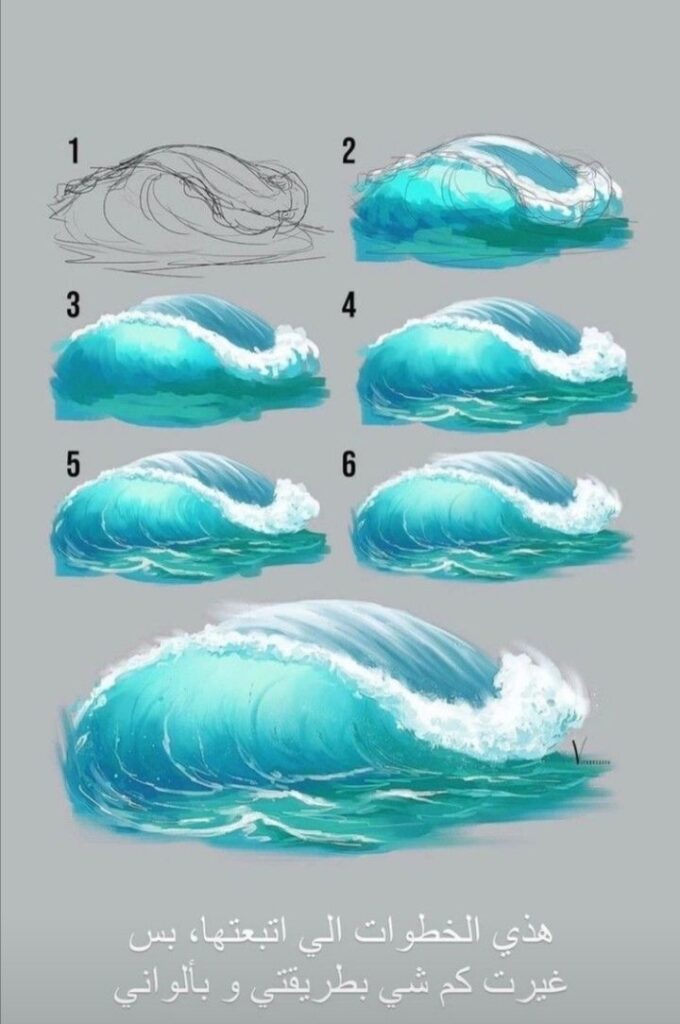
When drawing water, it’s important to consider the perspective from which you are drawing. If you are drawing underwater, the water will appear darker and objects will appear distorted due to the refraction of light. To accurately depict this, make sure to use darker shades of blue and add ripples and waves to the water’s surface.
Complex Water Bodies
Drawing water can become more challenging when dealing with complex water bodies such as rivers, waterfalls, and rapids. To depict these bodies of water accurately, pay attention to the flow and movement of the water. Use shorter, choppy strokes for rapids and longer, smoother strokes for calm water. Additionally, incorporating foam and bubbles can add depth and realism to your drawing.
Remember, practice makes perfect when it comes to drawing water. Don’t be afraid to experiment with different techniques and styles to find what works best for you.
Composition and Perspective
Framing Water Scenes
When drawing water scenes, framing is crucial to creating a compelling composition. The placement of the horizon line, the positioning of the water in the frame, and the inclusion of any surrounding elements can all impact the overall feel of the drawing.
Consider placing the horizon line in the upper third of the composition to emphasize the water and create a sense of vastness. Additionally, including elements such as rocks, trees, or boats can provide a sense of scale and add interest to the foreground.
To create a dynamic composition, experiment with different framing techniques, such as using a wide-angle lens or changing the aspect ratio of the drawing.
Depth and Foreground Interest
Adding depth to your water scenes can make them more engaging and realistic. One way to achieve this is by including foreground interest, such as rocks or plants, to create a sense of depth and scale.
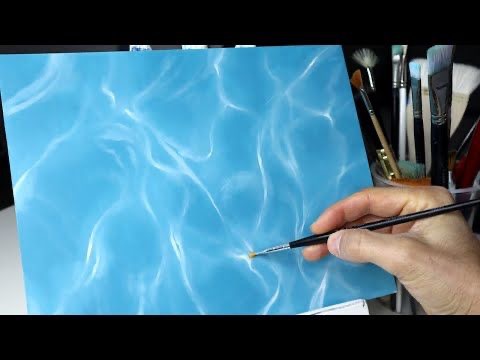
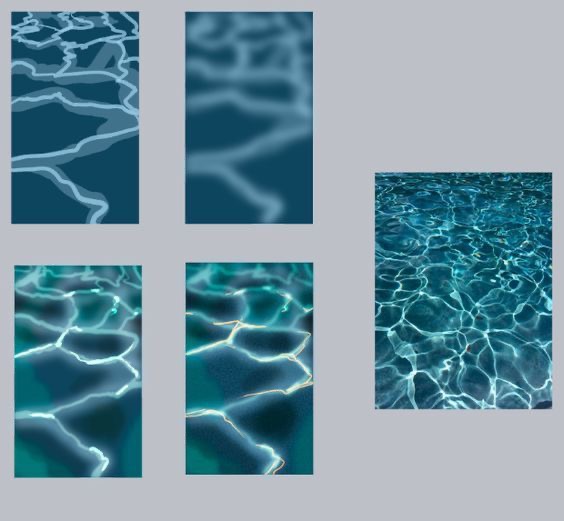
Another technique is to use perspective to create the illusion of distance. For example, drawing distant mountains or trees smaller than those in the foreground can create a sense of depth and distance.
Finally, consider using shading and color to create the illusion of depth and texture. Using lighter colors and softer edges in the distance can create a sense of atmospheric perspective. Using darker colors and sharper edges in the foreground can add depth and texture to the drawing.
By utilizing these composition and perspective techniques, you can create captivating water scenes that draw the viewer in and convey a sense of realism.
Finishing Touches
Adding Details and Textures
To make your water drawing look more realistic, you can add details and textures. One way to do this is by adding ripples or waves to the surface of the water. You can achieve this effect by using short, curved lines that overlap each other. Vary the size and direction of the lines to create a more natural look.
Another way to add texture is by drawing reflections. If there are objects near the water, like trees or buildings, draw their reflection in the water. Use a lighter shade of the object’s color and draw it as if it were a mirror image of the object.
Highlighting and Shadows
To add depth and dimension to your water drawing, you can use highlighting and shadows. Start by determining where the light source is coming from. Then, use a lighter shade of blue or white to highlight the areas of the water that are facing the light source. Use a darker shade of blue or black to create shadows in the areas that are facing away from the light source.
You can also use shading to create the illusion of depth. Draw the water in layers, with the foreground being darker and more detailed than the background. This will make the water appear closer and more prominent.
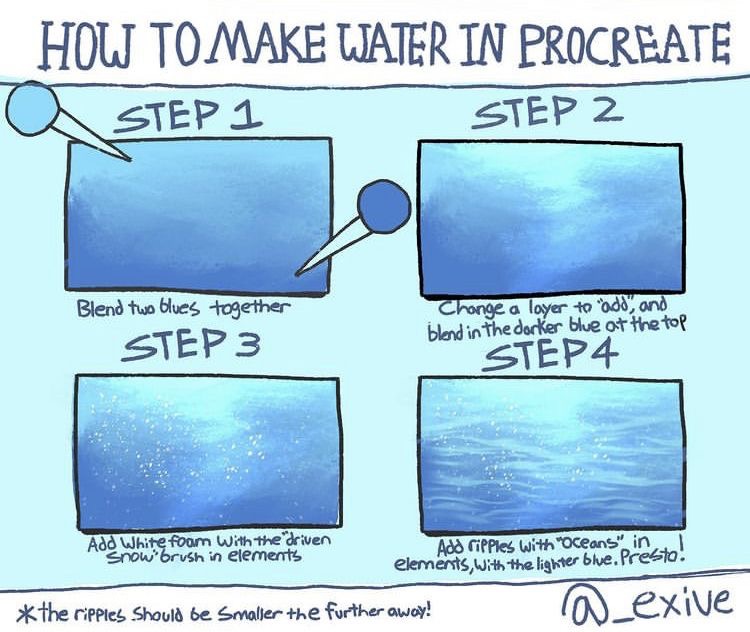
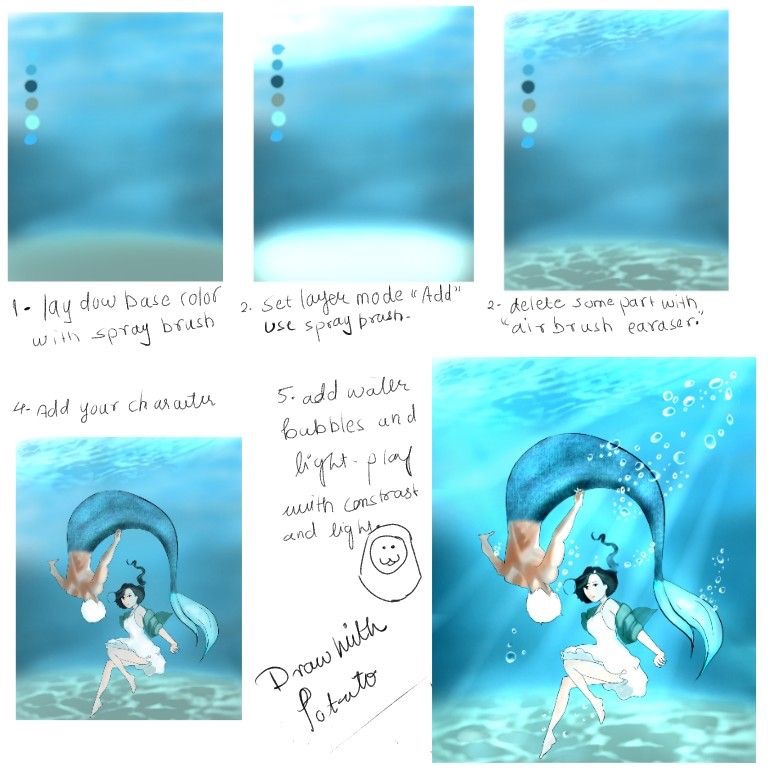
By adding details, textures, and shading to your water drawing, you can create a more realistic and visually appealing image. Experiment with different techniques and styles to find what works best for you. With practice, you’ll be able to draw water that looks like it’s flowing right off the page.
Practice and Improvement
Studying Real Water
To improve your ability to draw water realistically, studying real water is essential. Take a moment to observe how water moves and interacts with its surroundings. Pay attention to the way light reflects off its surface, the ripples and waves that form, and the way it flows around objects.
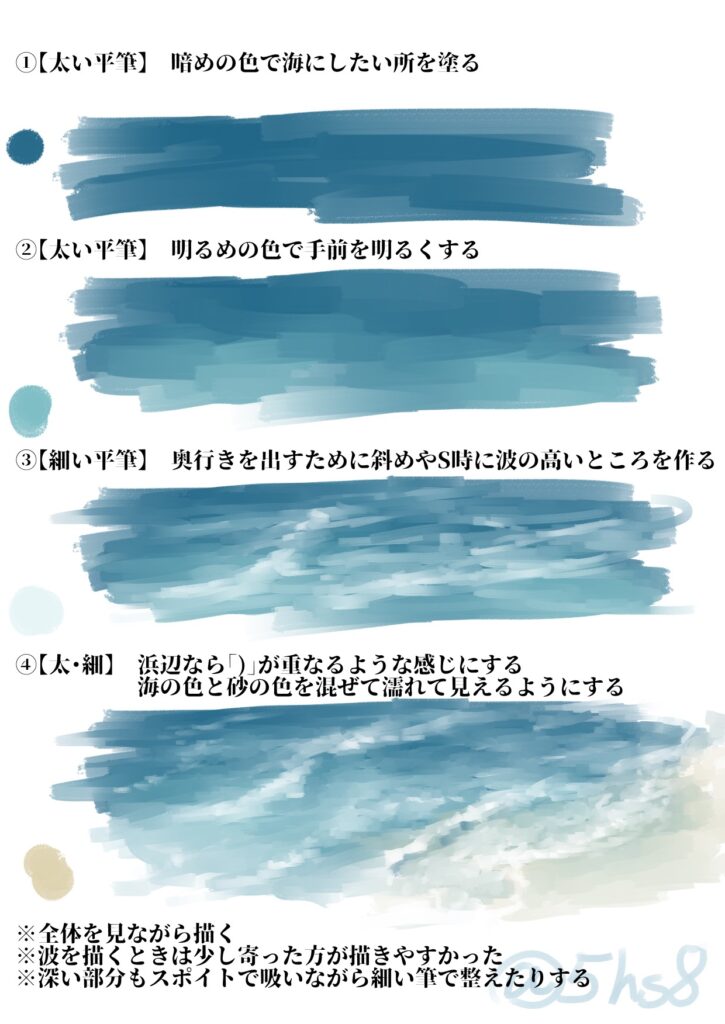
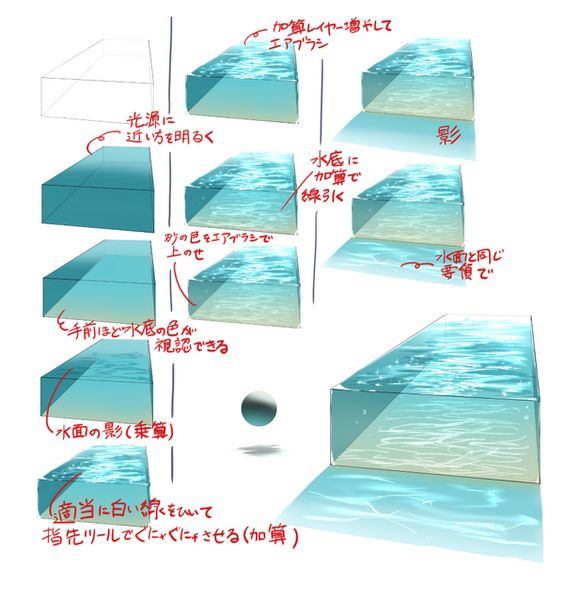
To further your understanding, consider taking reference photos or videos of water in different settings. This will allow you to study water in detail and capture its unique characteristics. Analyzing these references can help you identify patterns and details that you may have missed before.
Experimentation and Iteration
Practice makes perfect, and the same goes for drawing water. Experiment with different techniques and styles to find what works best for you. Try using different materials, such as pencils, pens, or watercolor, to see how they affect the final result.
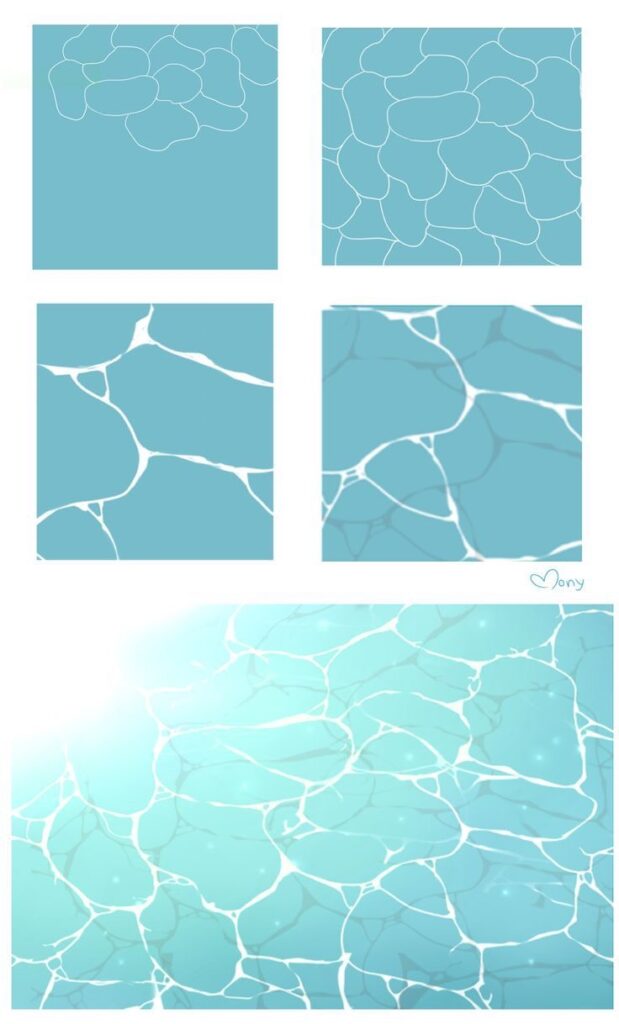
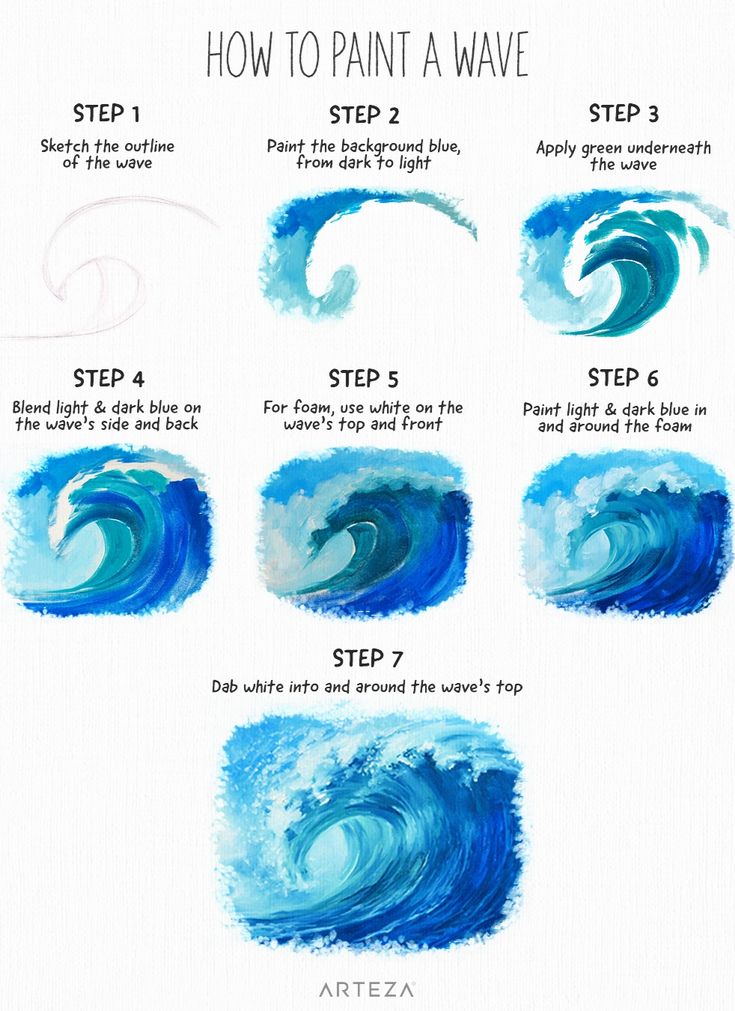
As you practice, don’t be afraid to make mistakes. Use each drawing as an opportunity to learn and improve. Take note of what works and what doesn’t, and adjust your approach accordingly.
Remember, drawing water is a skill that takes time and dedication to master. Study real water and try different techniques. This will help you draw water realistically and create stunning art.
- 15.9Kshares
- Facebook0
- Pinterest15.9K
- Twitter0
